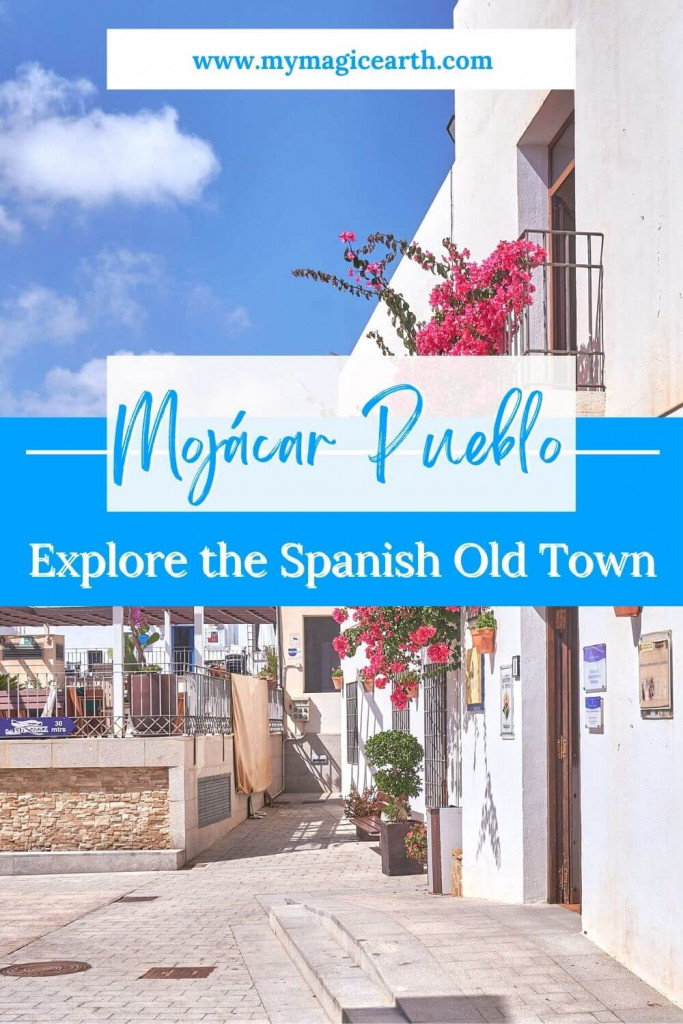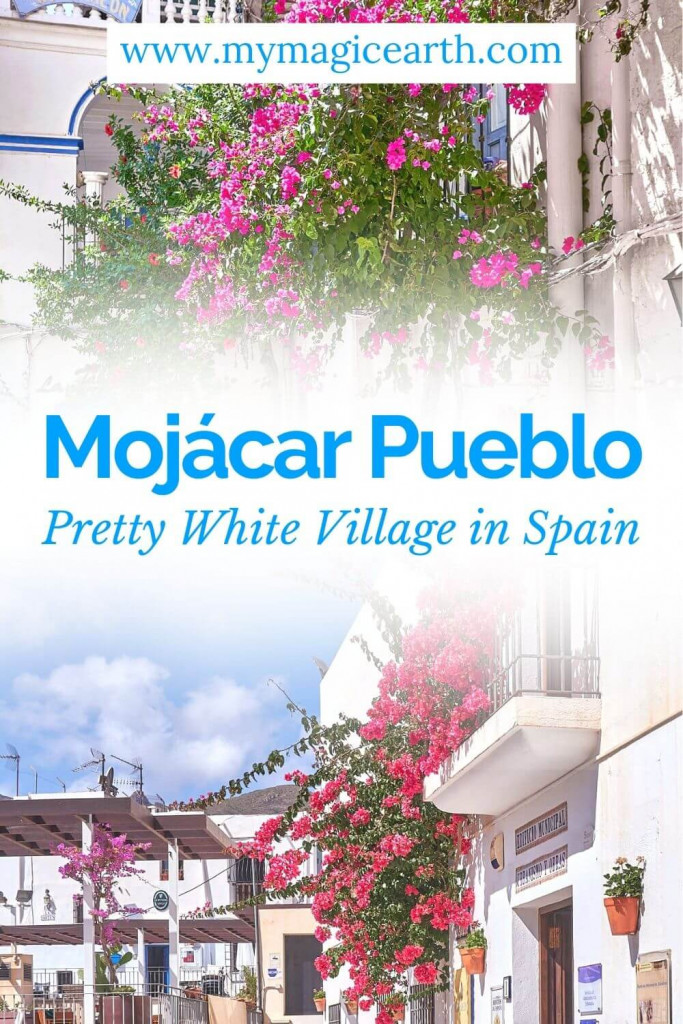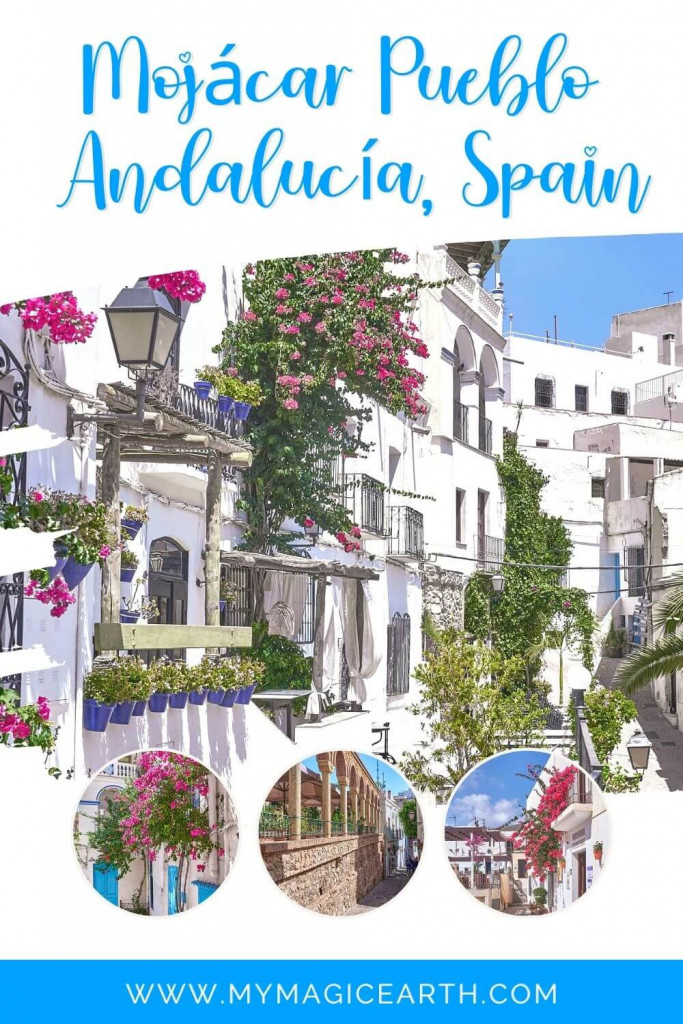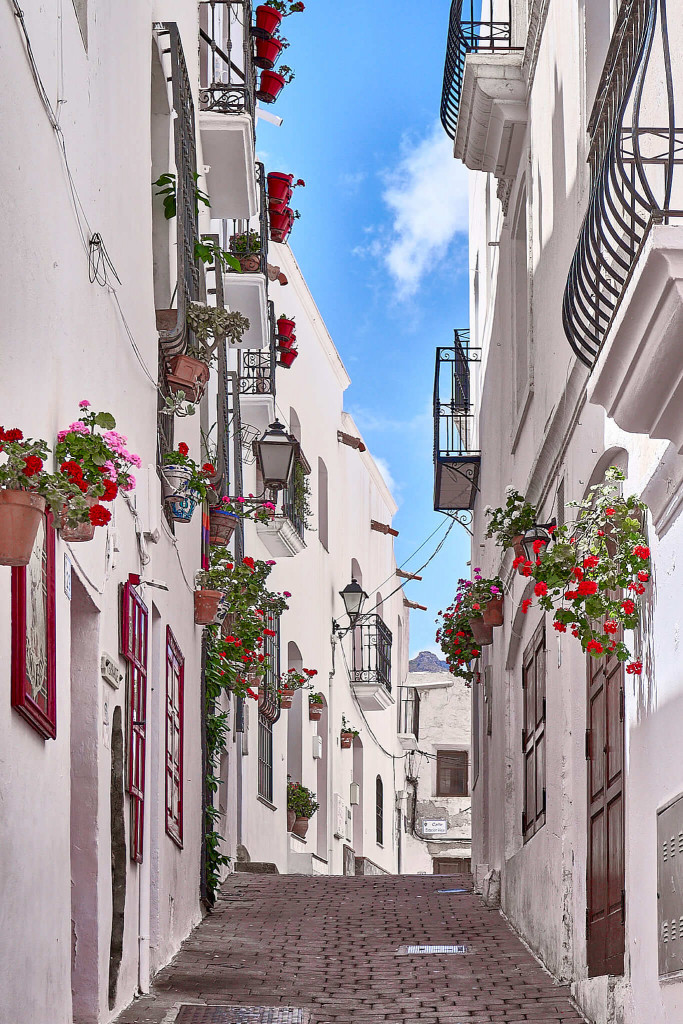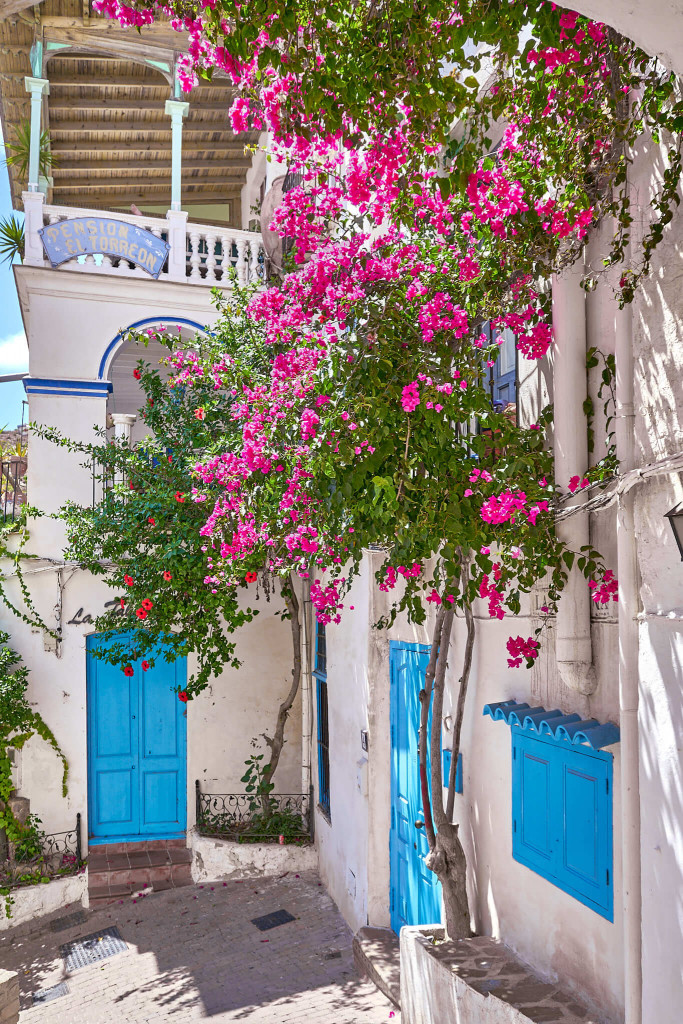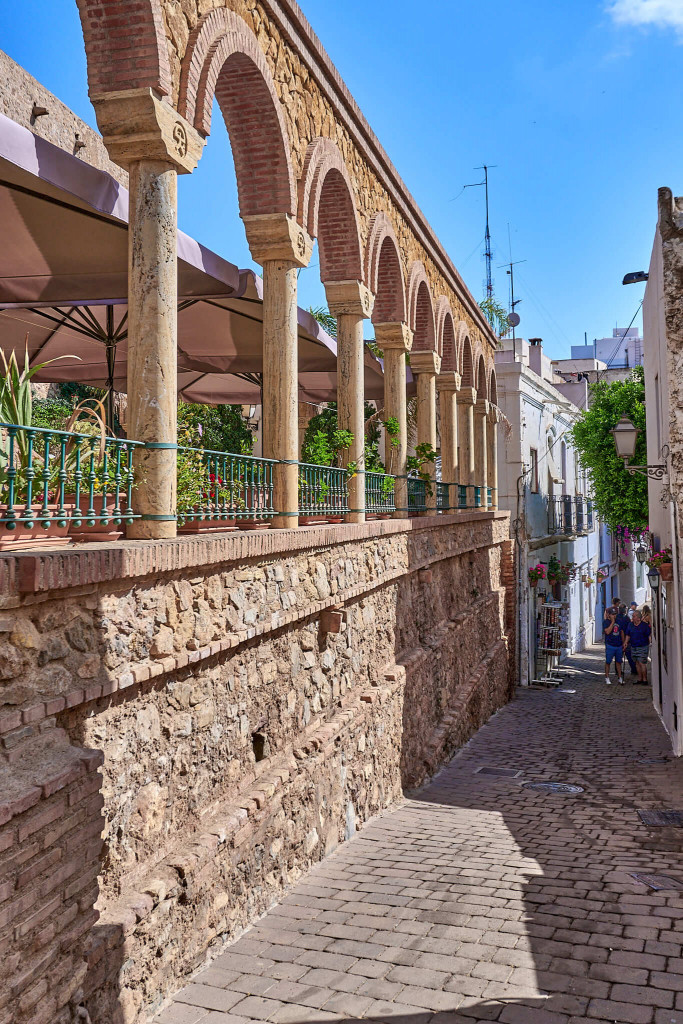Nestled in Andalucía, Mojácar Pueblo is typical whitewashed village, adding to the allure of Almeria. Situated 90 kilometers north of Almería’s capital, it graces the end of Sierra Cabrera. A place steeped in history, it witnessed the Greeks, who displaced the Phoenicians and Carthaginians over 2000 years ago, establishing a trading post. The Romans, too, left their mark, bestowing the Latin name Moxacar upon it. Later, the Moors arrived, transforming the name to Muxacra, eventually giving rise to the enchanting Mojácar we know today.
Mojácar reveals itself in two facets: the timeless charm of Mojácar Pueblo, perched on the hill of Sierra Cabrera, and the modern beach resort nestled at its foothill. The enchanting Pueblo features white houses cascading down the hillside, intricate narrow alleyways forming a labyrinth, and distinctive Mudéjar architecture that defines its essence.
I explored the village years ago during our family stay at the Hotel Vera Playa. Due to personal reasons, I couldn’t delve into the town then. All I remember are the unforgettable whitewashed houses. On a later trip, when we spent two weeks on the Mediterranean Coast of Spain, our family revisited Mojácar Pueblo.
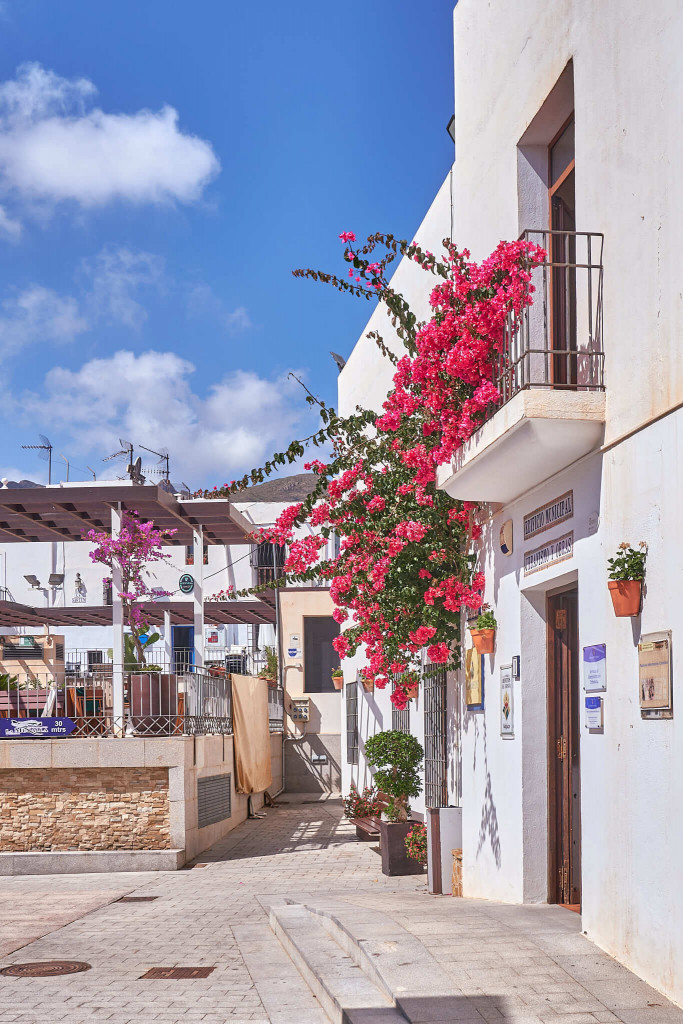
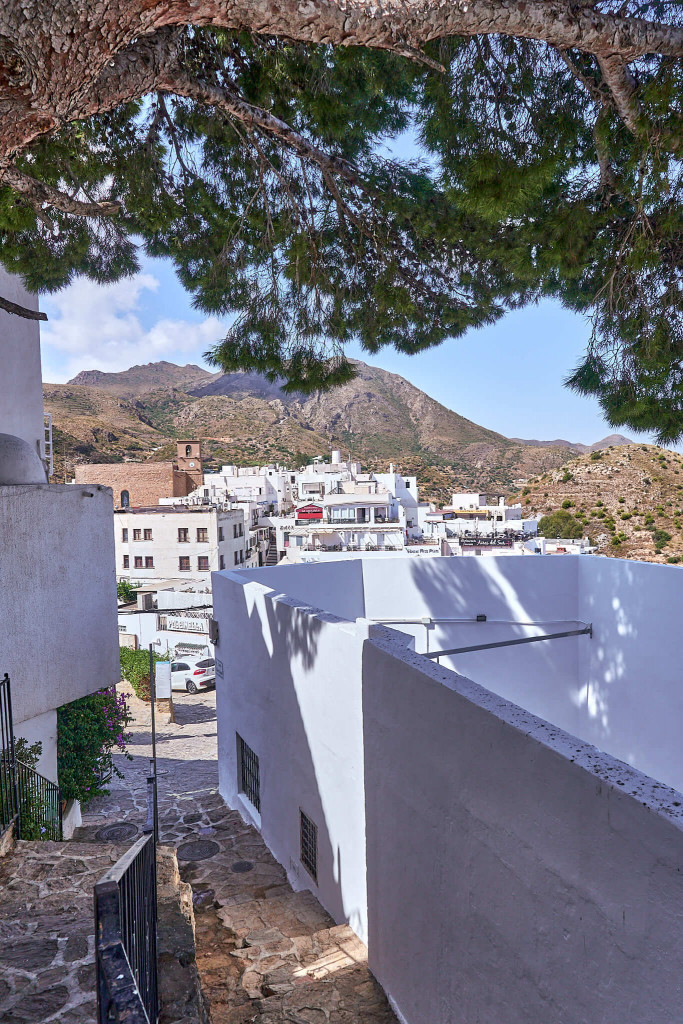
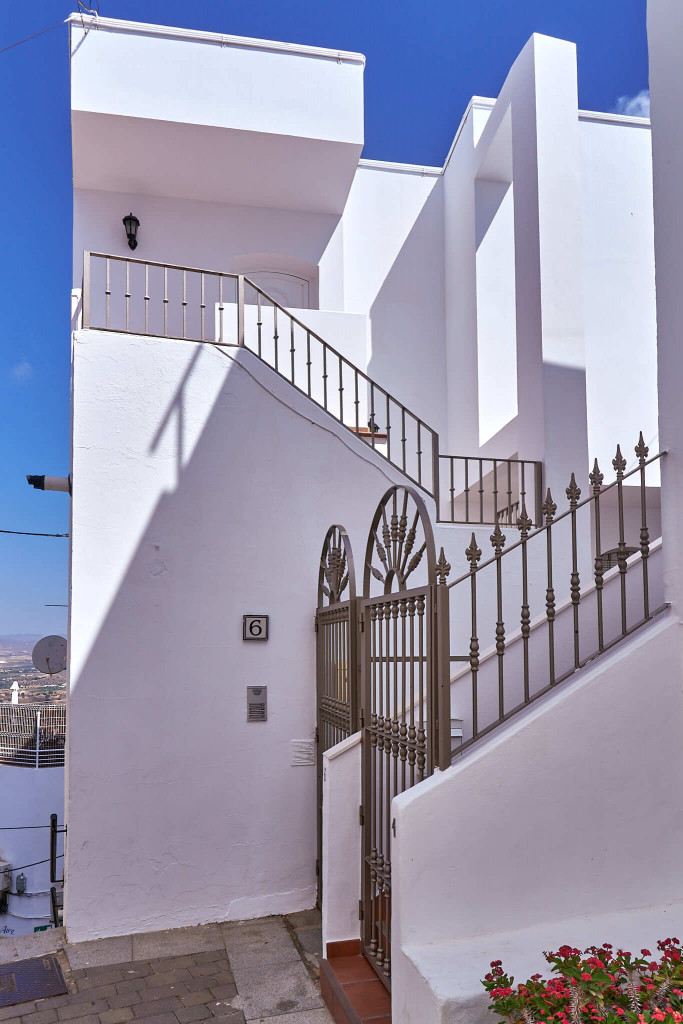
Labyrinth of streets
Navigating through the parking area, we meandered along the labyrinthine streets, ascending steep walkways, discovering secluded corners and terraces. I relished wandering through the narrow streets, especially appreciating the safety of pedestrian zones. The absence of traffic makes these alleyways peaceful and delightful.
Another aspect I adore about these winding streets is the presence of local shops offering handmade items and souvenirs. I ventured into several stores and was pleased to find reasonable prices. The fridge magnets and shopping bags make for great gifts to bring back home.
Whitewashed houses in Mudéjar architecture
Most houses adhere to the traditional whitewashed style. The locals employ slaked lime mixed with salt and water, a cost-effective and durable alternative for painting and maintaining the houses. It’s evident why such a village is named for its white appearance. The white walls reflect the summer sun, helping keep the interiors cooler. As a tourist, strolling among the white houses felt refreshing and beautiful. The white color gives an illusion of visually wider narrow streets.
These square-built white houses lining the very narrow, often stepped streets showcase Mudéjar or Moorish architecture. Delicate vines hang from the walls, and flowers adorn the arches of the narrow streets. The balconies, adorned with colorful geraniums, create a charming contrast against the pristine whitewashed walls. It’s truly picturesque!

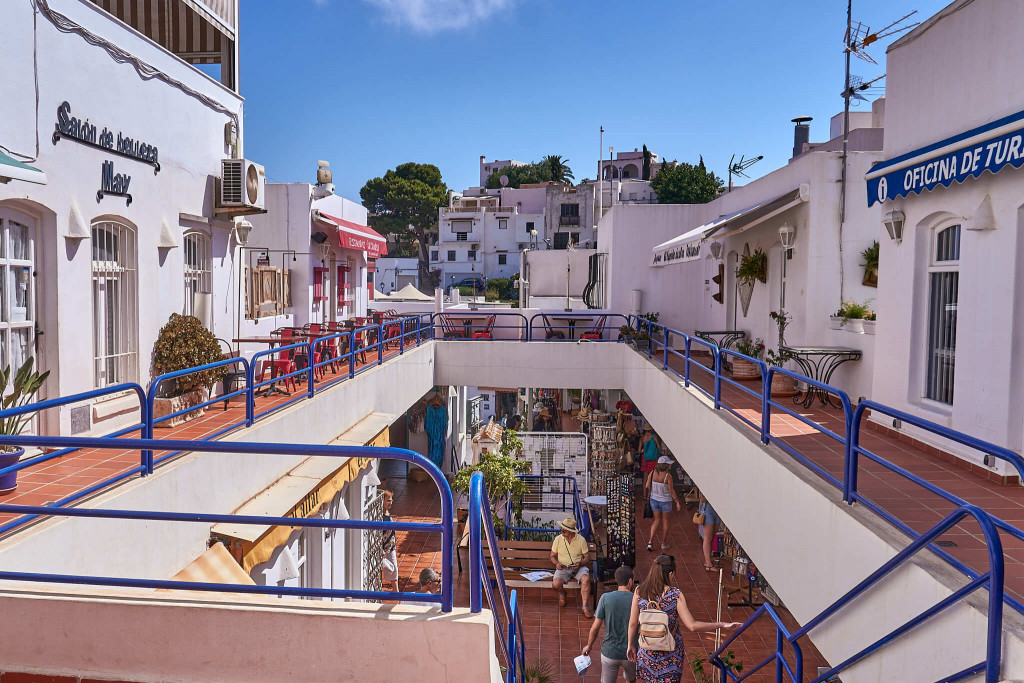
Plaza del Parterre
One of the charming squares is Plaza del Parterre, nestled amidst several eateries and the Iglesia de Santa María, a quaint fortress-style Catholic Church erected at the close of the sixteenth century atop the remains of a mosque. Today, it remains the spiritual heart of Mojácar.
Interestingly, the Plaza serves as the extended terrace of Restaurant Casa Irene. It had just opened when we arrived, offering us a perfect opportunity for a quick lunch before the crowds gathered. Additionally, the tourist office is conveniently located just behind Plaza del Parterre, serving as a helpful resource for visitors seeking more information. Adjacent to the office, there’s a delightful shopping gallery.
La Plaza Nueva (New Square)
The perspective from Plaza Nueva, an elevated square, offers one of the finest vistas in Mojacar. The impressive views of the nearby hills and expansive plains stretch out to the stunning Mediterranean and the rugged landscape. It’s a perfect spot to relax, sip on a refreshing drink, and soak in the scenery.
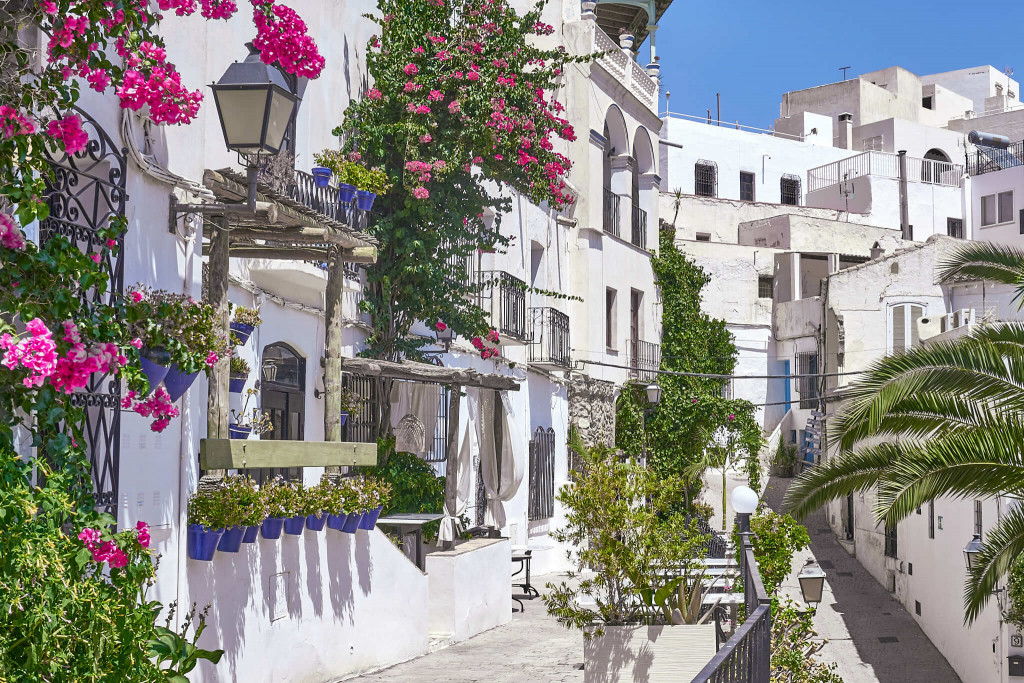
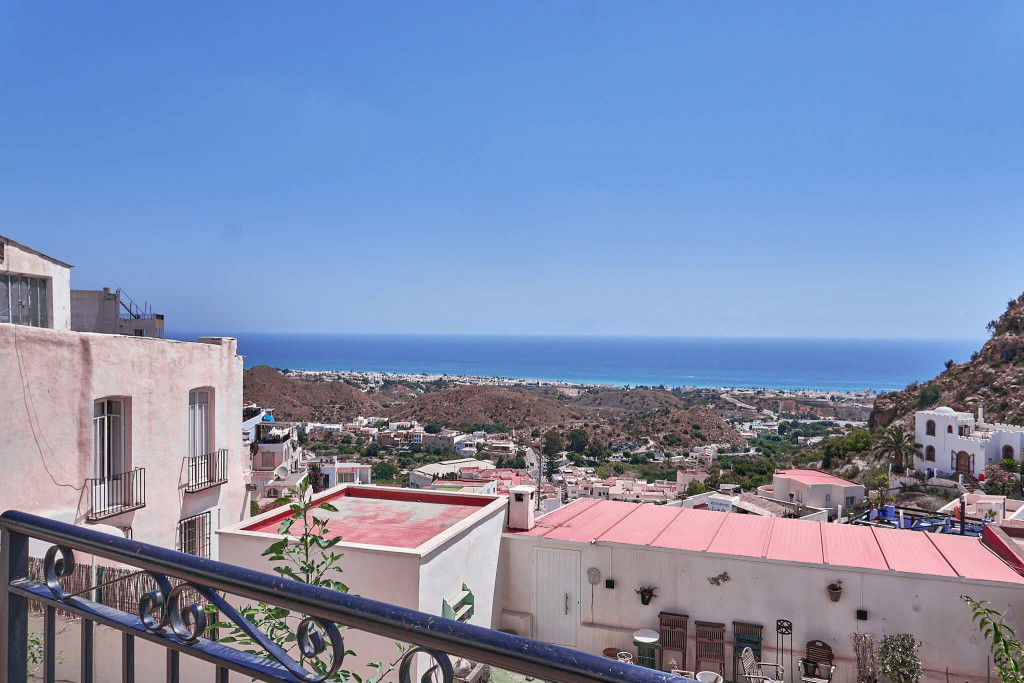
Gran mirador de Mojacar (Viewpoint)
After enjoying La Plaza Nueva, we embarked on a brief uphill stroll to reach a captivating viewpoint. Positioned at the village’s peak, the Gran Mirador de Mojácar provides breathtaking 360-degree vistas. The observation platform is neatly paved, and there’s even a hotel nearby – El Mirador del Castillo.
Pension El Torreon (The Old Customs House)
Exploring Mojácar Pueblo revealed charming surprises, like stumbling upon the corner of Pension El Torreon. Descending from the viewpoint towards the parking area, we unexpectedly encountered this gem near the old city gate. Pension El Torreon, an ancient toll house doubling as Mojácar’s customs house, dates back to the 18th century. It once served as the place where visitors paid taxes to enter the town, adding a historical touch to our stroll.
Travel tips to Mojácar Pueblo in Andalucía
How to reach there
Getting to Mojácar Pueblo in Andalucía is a breeze with various transportation options. If you’re coming from Almeria, it’s just a quick hour away. For those flying in, the nearest city with an airport is Granada. For more detailed information, you can check here.
Where to stay
- Pension El Torreon nestled in a charming corner at the heart of the village is a hidden gem waiting to be discovered.
- Rincón de Hada in the centre of the village offers spectacular views that captivate the senses.
- Hotel Best Oasis Tropical, just 50 metres from the beach, offers stunning views of the Mediterranean Sea.
